There are many ways to remove contaminants from the land, but it is a constant battle for scientists to find better and cheaper ways to the job. Recent research published in Soild Earth suggests plants may present a solution – one that’s particularly promising for poor areas. Jane Robb describes the findings…
Bolivia has a long and complicated mining history, going back to the 1500s. Untreated tailings are commonly left in rivers, causing widespread contamination of waters and soils downstream. These wastes often contain pyrite, which generates sulphuric acid when exposed to oxygen and water, leaching the surrounding rocks of heavy metals in a process known as acid mine drainage. Mines in Bolivia also use sulphuric acid in the mining process, which catalyses production of acid rock discharge. With growing conflict over the rapid environmental degradation that is causing public health problems across the country, the Bolivian government declared an emergency zone in the Huanuni watershed in 2009, just one of the areas in which heavy metal contamination occurs.
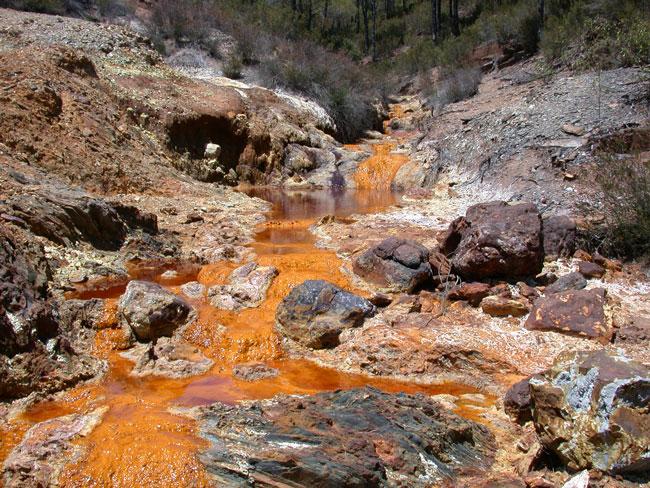
Acid mine drainage causing contamination of water and soils in areas close to Rio Tinto, Spain. (Credit: Carol Stoker, NASA)
Soil heavy metal contamination has serious effects on microbial life and the taxonomic diversity of soils, not to mention the serious health effects that high concentrations of elements such as As, Cd, Cr, Hg and Pb can have. Other metals like Cu, Ni and Zn are also released, and although they are essential for growth, they can cause problems when present in high concentrations. While heavy metal remediation in soils is a highly researched topic, we can still do more. This year, Jorge Paz-Ferreiro and his team et al have assessed two techniques that use plants for mine waste remediation: adding biochar to the soil and planting hyperaccumulators (plants that can store heavy metals at levels 100-fold greater than common plants without reducing their growth) in the affected area. Both of these techniques could be applied to sites like Huanuni in the future.
Prevention is the best way to fight soil and water contamination from mining, but in countries such as Bolivia, the political and cultural environments can present barriers to progress in this area. The country’s history of low economic diversification, corruption and political instability (democratically elected governments only began in 1982), and rapid inflation have continually hindered development. In addition, low population growth, high incidence of disease and low life expectancy exacerbates the country’s economic position – 86th out of 179 countries in the World Bank’s GDP ratings in 2012. Bolivia’s principal commodity for export is natural gas, but until the 1980s mining of tin and silver were its top economic exports. Although mining is not as prevalent in the country as it was in the past, the country still suffers from the impacts hundreds of years of mine tailings have brought to the environment. For Bolivia, prevention is a small part of what needs to be done to tackle the problem of soil and water contamination.
The extraction, filtration or stabilisation of heavy metals using hyperaccumulators (a process commonly known as phytoremediation) is nothing new. In fact, it has been studied and used for years as a remediation technique with varying success. But with costs that are a fraction of that spent on traditional remediation techniques – at a few cents per square metre for cleanup or removal of material compared to up to $300 per square metre– phytoremediation could be a viable option for countries such as Bolivia.
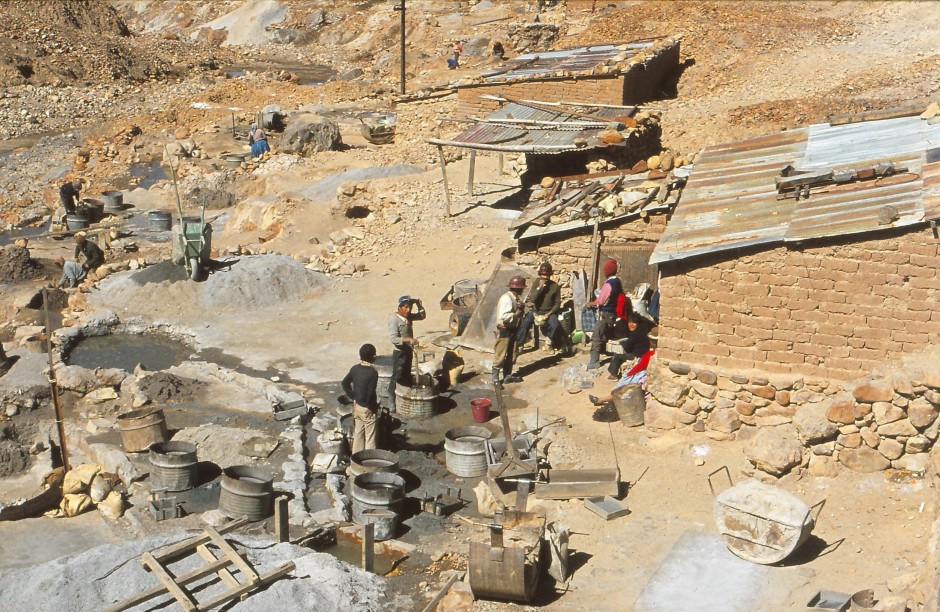
Mining in Bolivia in 1981. (Credit: Wikimedia Commons user Meister)
Paz-Ferreiro’s team are the first to assess the possibility of using biochar in combination with phytoremediation to remediate heavy metal contamination in soils. Phytoextraction uses hyperaccumulators to take up heavy metals and transfer them to aboveground tissues, such as stems and leaves. This process takes the contaminant from the soil to the plant, providing a way to extract economically valuable metals while improving soil – and therefore crop – quality. Phytofiltration sequesters pollutants from waters through the plant’s root system, and phytostabilisation limits the mobility and bioavailability (availability to plants and animals) of polluting substances by immobilising them. While phytoextraction is the most common and promising technique, both filtration and stabilisation help remove contamination from soils and reduce the probability of heavy metals being stored within crops.
Although phytoremediation is currently used and holds a lot of promise, there are still issues associated with this technique. For instance, phytoremediation may not be suitable in areas of elevated contamination, as plants could begin to suffer from the soil’s toxicity, and many known hyperaccumulators produce low amounts of biomass, meaning that heavy metals are removed slowly. Information is also missing on how climate change could impact the ability of phytoextractors to take up heavy metals. Most importantly, research on phytoremediation has, to date, focused on laboratory tests – more data from field experiments is needed to inform scientists about the impacts of microclimate and soil type on the effectiveness of phytoremediation.
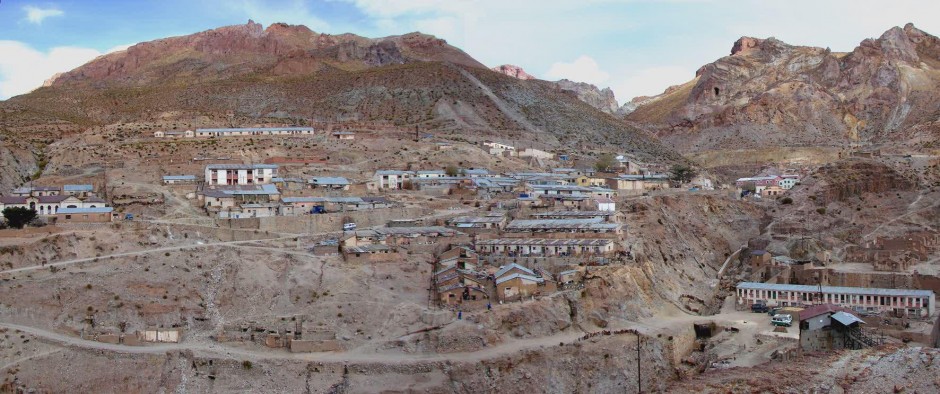
Modern mining in Seite Suyos, Bolivia, devastates the surrounding environment. (Credit: Wikimedia Commons user Mach Marco)
Biochar is formed from burning other organic materials – ranging from plants to manure. Biochars act on the bioavailable heavy metals in soils, reducing the amount that can be leached from the soil by crops. Heavy metals stick to the surface of biochar, and because they have a high surface area, they are the ideal medium for this task. Some biochars can also stabilise heavy metals by helping them precipitate as carbonate, phosphate and sulphate compounds. Unlike phytoremediation, biochar does not reduce the amount of heavy metals in the soil, but instead reduces the bioavailability of these elements.
As biochars effectively stabilise heavy metals, they reduce their ability to be taken up by plants, preventing phytoextractors from doing their job. This means that the use of biochar and phytostabilisors would be a more useful remediation approach. Paz-Ferreiro and his colleagues indicate that it could be possible to use biochar and phytoextractors together, if the biochar and phytoextractors target different heavy metals in heavily contaminated soils. Much larger, long-term trials are needed to see how well the two methods work together – something that will need to be tested in the lab and the field.
Today, the scale of mine-related contamination in Bolivia and the emergency zone of Huanuni is still staggering. To remediate contamination not only does the government need to address the continual contamination of soil and water, but also historical contamination. Paz-Ferreiro’s team have brought together two methods for soil heavy metal remediation that can help address historical contamination in areas such as Huanuni, and have hopefully paved the path for more research with these combined remediation techniques in the field.
By Jane Robb, Project Assistant, University College London
Reference:
Paz-Ferreiro, J., Lu, H., Fu, S., Mendez, A., Gasco, G.: Use of phytoremediation and biochar to remediate heavy metal polluted soils: a review, Solid Earth, 5, 65-75, 2014.

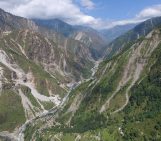


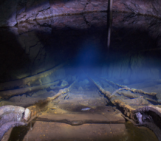
Pingback: Urban Farming – Food & Sustainability